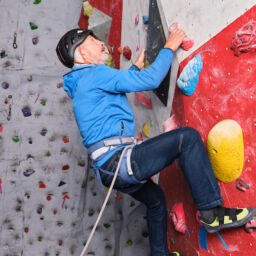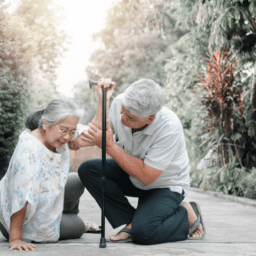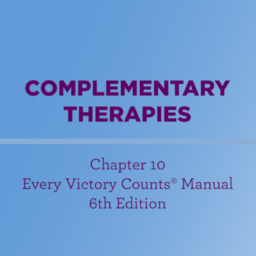Written by Fred Schott
Until I was diagnosed in July 2017 at the age of 70, I knew very little about Parkinson’s. My wife, Donna and I dug into the research right away, reading anything we could get our hands on.
Our research left us feeling both despair and hope. Despair because there is no known cure for Parkinson’s, and it can attack the human body in so many ways. Hope because Parkinson’s tends to progress slowly.
I soon discovered the Davis Phinney Foundation and its wonderful guide to Parkinson’s: the Every Victory Counts® manual. We felt encouraged by the essential information it provided, and we were inspired by the stories of people who are living well with Parkinson’s.
Between reading the Every Victory Counts manual, attending educational programs and discussing Parkinson’s with nationally recognized doctors, researchers and therapists in Omaha, I discovered that the one component of living well with Parkinson’s that nearly everyone agrees on is that frequent, strenuous exercise can slow and maybe even halt the progression of Parkinson’s.
 This was music to my ears! Since my early 30’s, I’ve been waking up at 5:00 am four times a week to work out in our family room. My routine includes stretching, lifting weights and riding a stationary bike for cardio. Until age 67, I played full-court basketball for an hour every Monday evening.
This was music to my ears! Since my early 30’s, I’ve been waking up at 5:00 am four times a week to work out in our family room. My routine includes stretching, lifting weights and riding a stationary bike for cardio. Until age 67, I played full-court basketball for an hour every Monday evening.
Armed with this new information about how effective exercise is to manage Parkinson’s symptoms, I added more strenuous exercises to my regular routine and increased the number of workouts to five or six times per week.
While these workouts made me feel great and helped with some of my symptoms, unfortunately, they did nothing to stop the quiver in my right arm and hand. A quiver that made my handwriting illegible.
Along with the quiver, my voice developed a permanent raspy sound. I could no longer sing, and my voice would sometimes disappear in the middle of conversations. The words just wouldn’t come out. I began to withdraw and speak less at social and family gatherings. While this was happening, Donna also observed that I was dragging my right leg. My solution? I exercised even harder.
Meanwhile, Donna continued to research all about Parkinson’s, and during her search, she came across the Life Care Center of Elkhorn, Nebraska, a local leader in the treatment of Parkinson’s, located less than five minutes from our home. Although I was reluctant to go, Donna convinced me to check it out. I was impressed. I met three therapists who specialize in working with people with Parkinson’s. They gathered baseline data from me and set me up on a plan. Being fully retired, I could commit to three days a week of two-and-a-half-hour sessions, along with daily homework, for six weeks!
Early on, I wondered what I had committed to, especially when Trena the voice therapist had me shouting out random words and simple multiplication tables to nobody in particular. While we talked about our families and interests, Trena constantly reminded me to speak louder and with more “INTENT”. She had me read and “SPEAK OUT” simple stories and fables as if I were reading to a large audience.
Once Trena and I were finished, she passed me off to my physical therapist, Ky’Lee. KY’Lee has a sweet, adventurous smile, and she was impressed with the list of stretches and exercises that I had been doing for years. She encouraged me to continue those exercises with a few adjustments and introduced me to eight “big maximal daily exercises”, which were quite difficult. Despite her smile, Ky’Lee was a tough taskmaster.
Michelle, my occupational therapist, was the cruelest of all. She put me through tedious exercises designed to reawaken fine motor skills and muscles needed to do simple things, like filling a fork with food and getting it to my mouth without dropping any of it. The third-grade cursive worksheets she gave me were a lot harder than I remember!
December 22, 2017, was my last day of therapy at the Center. We ran the same tests we ran on the first day and compared the results to my baseline data.
In all three categories, and in almost every measurement, I improved. And significantly so.
I feel better, too. My posture and flexibility have improved, I have more energy, I’ve found my voice and confidence, I’m singing tenor in church again and my handwriting is much clearer.
My most proud and teary-eyed moment, however, was when my daughter, who I hadn’t seen for a while, said, “I noticed it right away. I feel like I’ve got my Dad back!”
To me, this experience means that the right kind of program, built with frequent and strenuous exercise, holds the possibility of not only slowing or halting the progression of Parkinson’s but helping to regain some of what was lost.
I’m just at the beginning of this life-long struggle. I know I have a lot to learn, but I’m encouraged, hopeful and motivated to work hard. I’m going to miss my wonderful taskmasters and the entire staff of therapists at the Life Care Center, but I’ll be back every 60-90 days for a tune-up.
Learn More
Find the right physical therapist to fit your needs.
Try our Exercise Essentials Mini-Course to get an idea of a physical therapist-recommended workout plan and to get started on exercising with Parkinson’s.
Learn the three critical components of your Parkinson’s treatment plan with physical therapist Sarah King.


















This is a wonderful example of how someone diagnosed with Parkinson’s can fully utilize all the therapies available to make a true difference in their mobility, independence, and vitality. Way to go Fred!